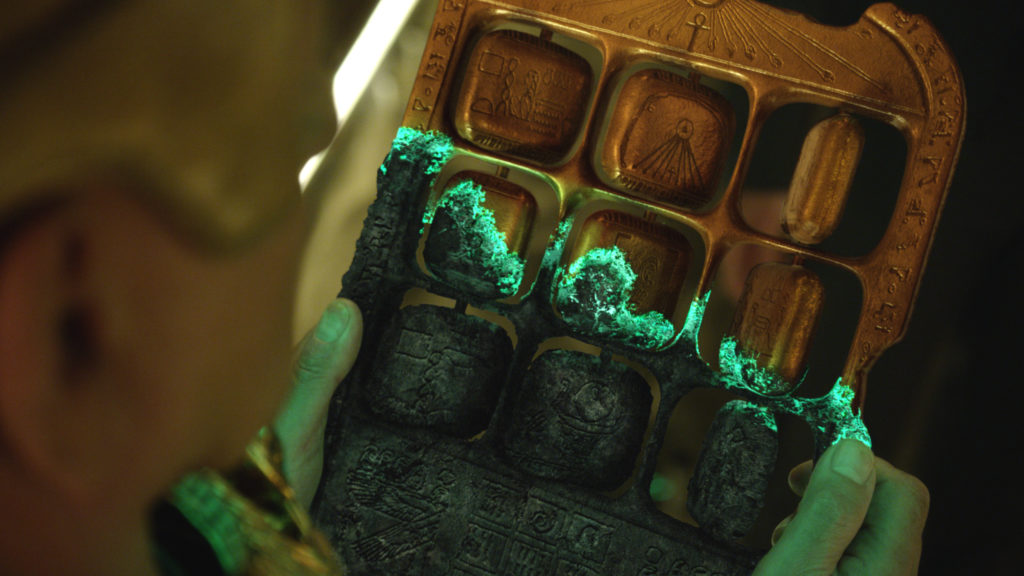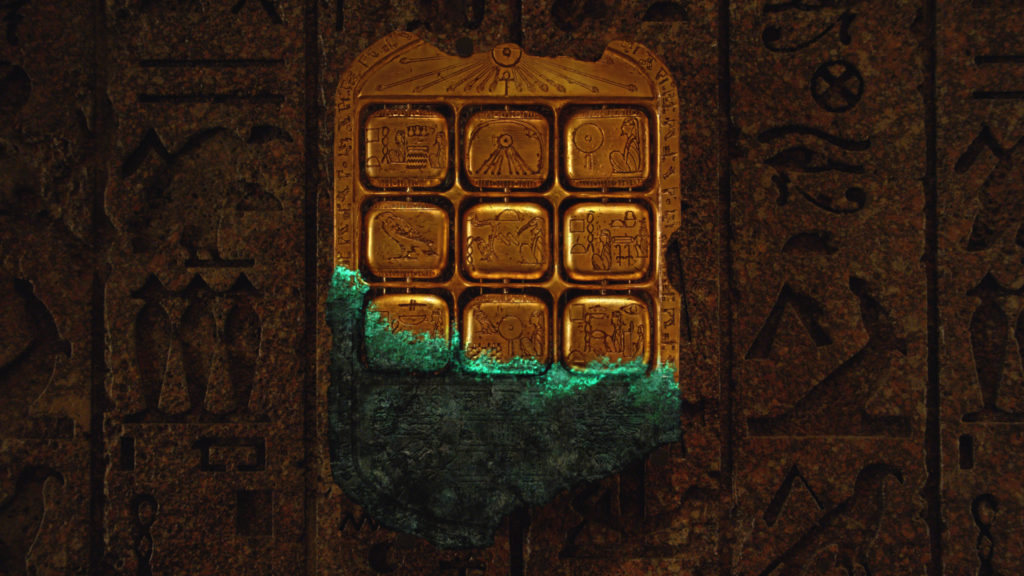
Cinefex: Night at the Museum: Secret of the Tomb – Q&A With VFX Supervisor, Zave Jackson
What was Cinesite’s involvement in the show?
We were tasked with the enhancement of the golden tablet – both look-dev and execution – showing the progression of its corrosion and the green glowing edge detail. We also created the golden glowing tablet shots. To do that, we referenced the first two Night at the Museum films to get an idea of the series’ vibe. We also looked at time-lapse footage of various metals corroding, and explored imagery of rust patterns and different types of tarnished metals. We delivered 87 shots over the course of about five weeks.
What happens during the corrosion sequence?
As the damaged tablet starts to corrode, the magic keeping the museum exhibits alive starts to die. There’s a close-up shot of the golden tablet on the wall of the museum, in which we see the corrosion texture crawling over its surface. The camera flies down on to the surface of the tablet to an almost macro-photography distance, then follows the decay as it advances. This establishes that the tablet is “dying” from this disease-like corrosion.
How did you go about creating the corrosion shots?
We began by building an accurate CG model of the practical tablet used on set: a golden slab with nine square sections engraved with Egyptian hieroglyphics. The squares rotate on spindles, like an ancient abacus. We knew we’d need to get extremely close to the model, seeing the fine scuffing of the polished gold surface and the more complex detail of the corroded parts, so we went through a detailed texturing process. Additional texturing work was required for the corroded version.
Next we created the intricate, organic movement of the corrosion’s green, glowing edge as it progresses over the tablet’s surface. The animated leading edge was created in 2D, using fractal noise tools. We turned the resulting animation into masks that were UV-mapped back on to the geometry. We also used the masks to displace the geometry in the 3D render, giving volume and depth to the edge of the corroded section of tablet.
For shots which didn’t need to be animated, our solution was to object-track the tablet used in the shot. We created a predetermined set of directional lighting passes, texture passes and utility passes based on a generic lighting set up and rendered using V-Ray. It was then up to the compositors to balance the lights to make the new corroded tablet fit into each shot.
Did working on Night at the Museum: Secret of the Tomb teach you anything new?
We learned that, given a body of shots that were quite similar and by using the right methodology, it’s possible to deliver a fairly large number of shots with just one person handling the lighting, and a small compositing team.

